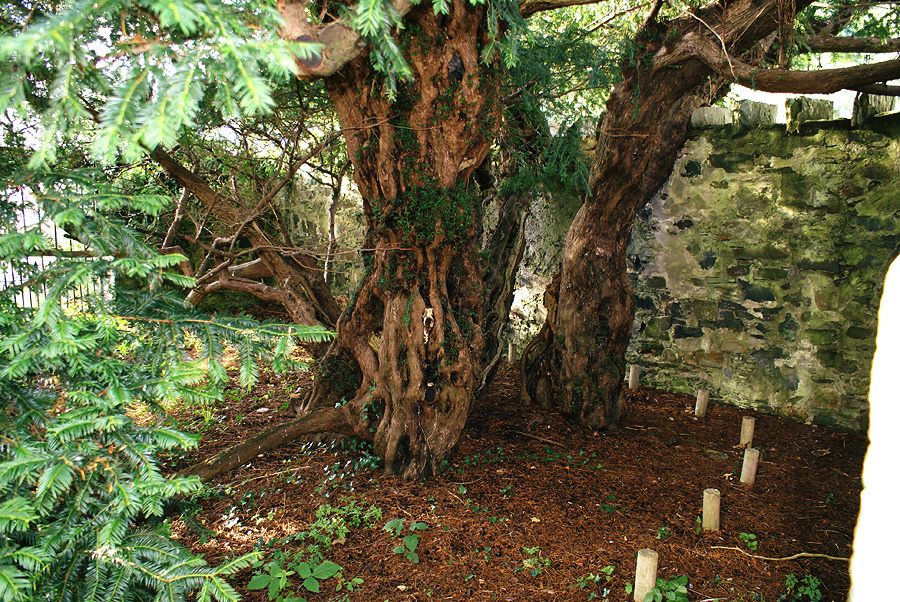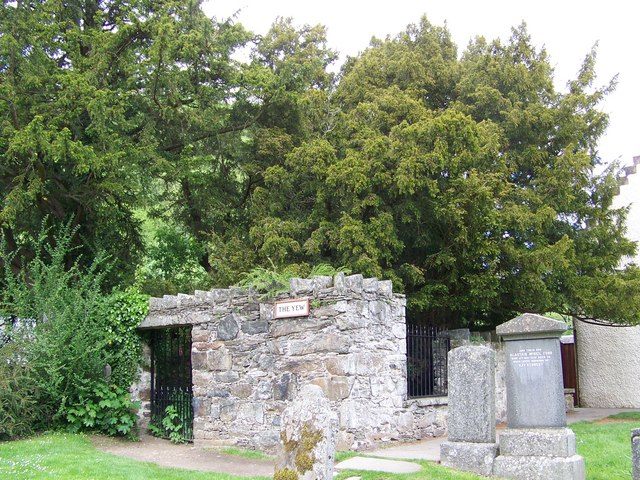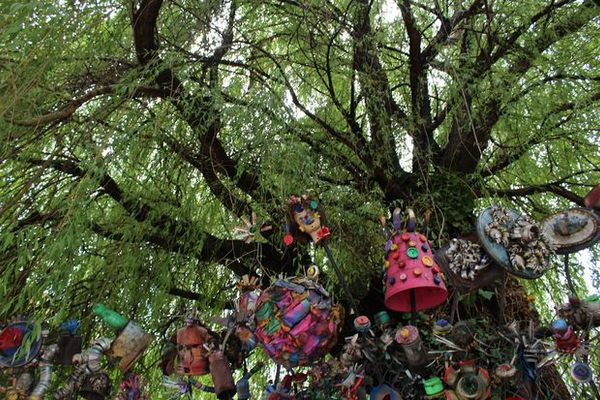Fleeting Wonders: A 2,000-Year-Old Tree Swaps Sexes

A trunk of the Fortingall yew. (Photo: Mogens Engelund/WikiCommons)
The yew tree at Fortingall church in Perthshire, Scotland, might be the oldest tree in Britain. Most experts agree that it’s been around for 2,000 to 3,000 years, and even the low-end estimates put it at around 1,500 years old.
When you’re that old, you can do whatever you want. And apparently, the Fortingall yew wants to partially change from male to female.
The distinctive red yew berries only appear on female trees; male yews produce pollen instead. And the Fortingall yew has been busily producing pollen for millennia. This year, though, botanists found three berries on one of its branches. After presumably checking to make sure the berries weren’t glued there by a prankster, experts concluded that this one branch of the tree is now behaving as female.

Yew berries. (Photo: grassrootsgroundswell/WikiCommons)
This kind of spontaneous sex change is atypical, but not as unusual as you’d think. Conifers like the yew aren’t usually hermaphroditic—the entire tree is normally either male or female. But occasionally, part of the tree (usually in the crown) will switch, and the tree will produce both berries and pollen.
The Fortingall yew’s miracle berries will be planted in Edinburgh’s Royal Botanic Garden, as part of the garden’s yew conservation hedge, a half-mile hedge made of 2,000 yew trees interspersed with cuttings from historic and threatened varieties of yew, including the Fortingall tree. There, they’ll help conserve this ancient species—and serve as a reminder that it’s never too late to start doing what you love.

(Photo: Trish Steel/WikiCommons)
Every day, we track down a fleeting wonder—something amazing that’s only happening right now. Have a tip for us? Tell us about it! Send your temporary miracles to [email protected].













Follow us on Twitter to get the latest on the world's hidden wonders.
Like us on Facebook to get the latest on the world's hidden wonders.
Follow us on Twitter Like us on Facebook